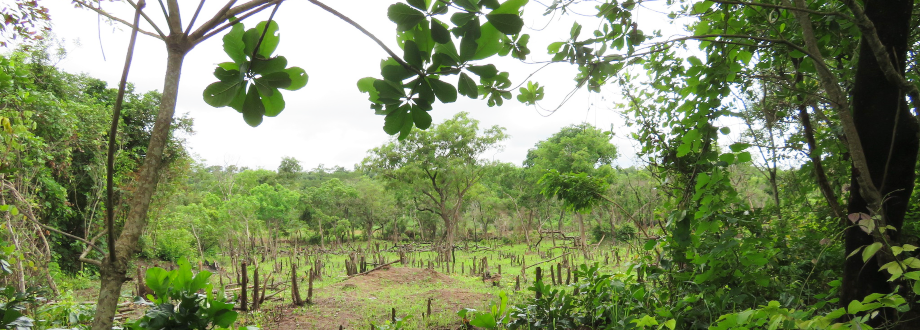Republic of Guinea
The Republic of Guinea, for its extensive hydrographic network, is also known as the "water tower of West Africa." The water sharing point between the main regional watersheds is located in the Fouta Djalon mountain range in Middle Guinea. Guinea is home to the source of several major rivers crossing the Sahel countries, such as the Senegal River in the Fouta Djallon massif or the Niger River, which rises in Upper Guinea and flows through Mali, Niger, Benin and Nigeria. Guinea also has 16 Ramsar sites, selected for their hydrological functions, and four Biosphere Reserves, which are home to a great diversity of species and are, as such, of global importance for biodiversity.
The Ebola health crisis (2014–2016) caused a severe economic instability in an already poor country, which in turn affected access to food and market fluctuations. Agriculture, which employs 85 percent of the working population, is one of the country's economic pillars. It revolves around food crops (rice, peanuts, onions, etc.), export cash crops (coffee, cotton, cocoa, palm oil, etc.) and livestock farming. It is estimated that in 2018, 183 000 hectares (ha) of tree cover were destroyed (Global Forest Watch). Unsustainable agrosylvopastoral practices (shifting cultivation, slash-and-burn agriculture, illegal logging especially for fuelwood, overgrazing, etc.) coupled with mining activities are the main causes. Biomass energy (mainly charcoal and firewood) is also one of the main source of energy for the Guinean population. In 2017, 77 percent of gross primary consumption came from biomass energy, which is systematically used by more than 85 percent of Guinean households.
In order to combat deforestation and restore degraded land, the country has made strong commitments at the national level (e.g. increasing the forest area by 28 percent by 2020 (PNDES 2016–2020) and internationally, notably in the framework of the Bonn Challenge and the African Initiative for the Restoration of 100 million ha by 2030 (AFR100), of which 2 million ha for Guinea.
EXPECTED RESULTS
In order to meet the prerequisites for local actions that will allow the achievement of its commitments (2 million ha) for forest and landscape restoration (FLR), Guinea has initiated a collaboration with the Food and Agriculture Organization of the United Nations (FAO) within the framework of a technical cooperation project (TCP) focusing on:
- the creation of a multi-stakeholder and intersectoral framework facilitating the scaling up of FLR and sustainable management, through capacity building, policy assessment and facilitation of multi-stakeholder dialogue;
- mobilization of partners and financial resources, notably through the preparation of projects enabling the scaling up of FLR actions; and
- the strengthening of knowledge on the FLR potential of the sites, in particular through the implementation of processes to evaluate restoration opportunities in the pilot zone of Faranah (Upper Guinea).

IMPACTS
This technical partnership lays the groundwork for scaling up FLR actions across the country, particularly in the context of actions directly supported by FAO. This FAO support has already enabled Guinea to be recently selected (March 2020) in the Global Environment Facility (GEF) Food Systems, Land Use and Restoration Impact Programme (FOLUR) for a total amount of more than USD 10 million. This GEF project will scale up and provide significant support to Guinean authorities from 2021 to promote sustainable food systems and livelihoods in the degraded landscapes of Forest Guinea and Upper Guinea.

